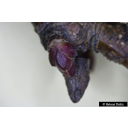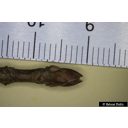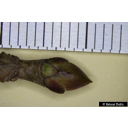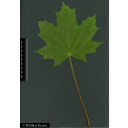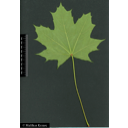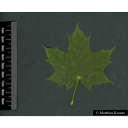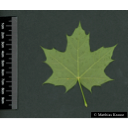Useful information about the taxon (species, subspecies, variety...)
Acer platanoides L. 1753
Sapindaceae
(APG IV)Norway maple
Taxon concept: The Plant List (2014), version 1.1
Distribution: Europe (without the British Isles), Caucasus
Size: 10 - 20 (m)
Flowering period: IV - V
Acer platanoides L. - Accepted: Acer platanoides L. bei The Plant List (2010); Familie: Sapindaceae (APG III)Acer platanoides L. - Accepted: Acer platanoides L. bei Zander 2008; Familie: Aceraceae (Zander 2008)Acer platanoides L. - Accepted: Acer platanoides L. bei The Plant List (2014), version 1.1; Familie: Sapindaceae (APG III)Acer platanoides L. - Accepted: Acer platanoides L. bei BfN Checklist Flora DE; Familie: Sapindaceae (APG IV)Acer platanoides L. - Accepted: Acer platanoides L. bei The Plant List (2010); Familie: Sapindaceae (APG IV)Acer platanoides L. - Accepted: Acer platanoides L. bei Schmeil-Fitschen 2019; Familie: Sapindaceae (APG IV)Acer platanoides L. - Accepted: Acer platanoides L. bei Rothmaler 2017; Familie: Sapindaceae (APG IV)Acer platanoides L. - Accepted: Acer platanoides L. bei World Flora Online - APG IV (Angiosperms); Familie: Sapindaceae (World Flora Online - APG IV (Angiosperms))
- Color of flower
- greenish-yellow
- Life form
- woody, tree
- Foliage persistence
- deciduous
- Soil conditions
- on perculating fresh (moist), nutrient-rich and alkaline, humus-rich, loose loam or scree soils
- Light conditions
- full sun, half shade
- Root type
- deep-rooted plant
- Succession type
- pioneer plant
- Natural occurrence (habitat)
- in mixed deciduous forests, ravine forests, oak-hornbeam forests, rather rarely in sunny lime-maple slope forests
- Constraints according habitat
- tolerant of pollution
- Usage
- wood is used for the production of musical instruments, furniture, marquetry and for turning
Haider, M. et al. (2005): Wildbienenkataster. See: https://www.wildbienen-kataster.de; Kämper, Wiebke et al. (2018): Flower visitation honeybee and bumblebee. See: https://www.bexis.uni-jena.de/ddm/data/Showdata/16086?version=2; Maurizio, Anna et al. (1982): Nektar und Pollen - die wichtigsten Nahrungsquellen der Honigbiene. 4. Ehrenwirth, München, 3, überabeitete Auflage; Pritsch, Günter et al. (1985): Bienenweide.. Neumann-Neudamm, Melsungen; Pritsch, Günter et al. (2007): 200 Trachtpflanzen erkennen und bewerten.. Kosmos, Stuttgart; Ruppertshofen, Heinz et al. (1995): Der summende Wald - Waldimkerei und Waldhygiene.. Ehrenwirth, München, 8., völlig neubearb. und erw. Aufl.; Schick, B. & Spürgin, A. (1997): Die Bienenweide. Eugen Ulmer Verlag, Stuttgart, Auflage: 4., völlig neubearb. u. erw. A., 216 S. 978-3800174188.; Sebald, O. et al. (1992): Die Farn- und Blütenpflanzen Baden-Württembergs. 4. Ulmer: 362. 3800133156.; Werle, Susanne et al. (2015): ITS2 DNA metabarcoding of wild bee pollen loads, collected in 2020 and 2021 across all three exploratories. See: https://www.bexis.uni-jena.de/ddm/data/Showdata/31545?version=6; Westrich, P. et al. (2018): Die Wildbienen Deutschlands.. Ulmer Verlag ISBN 978-8186-0123-2.;
Diese Webseite verwendet Google Maps, um Karten und Standorte von Pflanzen in den Hohenheimer Gärten anzuzeigen. Dadurch werden unter Umständen Daten an Google weitergeleitet, was mit einer Verarbeitung Ihrer personenbezogenen Daten verbunden sein kann. Die Datenschutzerklärung von Google finden Sie hier: Datenschutzerklärung von Google
| Sex | Standort | Accession number | Planting year | Donation | IPEN | Lat. | Long. |
|---|---|---|---|---|---|---|---|
| Parzelle D | EG-D-001-20400 | 1940 | XX-0-HOH-EG-D-001-20400 | 48,7099513432 | 9,2071214116 | ||
| Parzelle K | EG-K-002-20401 | 1850 | XX-0-HOH-EG-K-002-20401 | 48,7097088092 | 9,2087496379 | ||
| Parzelle M | EG-M-002-20402 | XX-0-HOH-EG-M-002-20402 | 48,7086750808 | 9,2086389749 | |||
| Parzelle G | SP-GB-009-10007 | 2001 | XX-0-HOH-SP-GB-009-10007 | 48,7107156552 | 9,2129254472 | ||
| Parzelle H | SP-HB-006-10047 | 2017 | XX-0-HOH-SP-HB-006-10047 | 48,7105854809 | 9,2136488235 | ||
| Parzelle K | SP-KB-010-10091 | 1900 | XX-0-HOH-SP-KB-010-10091 | 48,7110596884 | 9,2156004063 | ||
| Parzelle K | SP-KB-024-10101 | 2016 | XX-0-HOH-SP-KB-024-10101 | 48,7108924162 | 9,215270128 | ||
| Parzelle K | SP-KB-029-10104 | 2016 | XX-0-HOH-SP-KB-029-10104 | 48,7109424594 | 9,2151642051 | ||
| Parzelle L | SP-LB-030-10170 | 2004 | XX-0-HOH-SP-LB-030-10170 | 48,710818941 | 9,2152207077 | ||
| Parzelle L | SP-LB-046-10182 | 2022 | XX-0-HOH-SP-LB-046-10182 | 48,710988153 | 9,2160182054 | ||
| Parzelle L | SP-LB-047-10183 | 2022 | XX-0-HOH-SP-LB-047-10183 | 48,7109344964 | 9,2159886257 | ||
| Parzelle N | SP-NB-005-10203 | 2018 | XX-0-HOH-SP-NB-005-10203 | 48,7109951155 | 9,2161033101 | ||
| Parzelle N | SP-NB-010-10208 | 2016 | XX-0-HOH-SP-NB-010-10208 | 48,7111564322 | 9,2160837949 | ||
| Parzelle N | SP-NB-015-10212 | 2016 | XX-0-HOH-SP-NB-015-10212 | 48,7110209569 | 9,2162055757 | ||
| Parzelle N | SP-NB-023-10219 | 2019 | XX-0-HOH-SP-NB-023-10219 | 48,7111192676 | 9,2163370946 | ||
| Parzelle N | SP-NB-031-10225 | 2019 | XX-0-HOH-SP-NB-031-10225 | 48,7111622592 | 9,2164767607 | ||
| Parzelle N | SP-NB-035-10229 | 2016 | XX-0-HOH-SP-NB-035-10229 | 48,7112832222 | 9,2162872491 | ||
| Parzelle N | SP-NB-048-10241 | XX-0-HOH-SP-NB-048-10241 | 48,7113798711 | 9,2163650885 | |||
| Parzelle N | SP-NB-051-10244 | XX-0-HOH-SP-NB-051-10244 | 48,7112835545 | 9,2165316468 | |||
| Parzelle N | SP-NB-060-10254 | XX-0-HOH-SP-NB-060-10254 | 48,7113761886 | 9,2166977381 | |||
| Parzelle N | SP-NB-067-10259 | XX-0-HOH-SP-NB-067-10259 | 48,7114612937 | 9,2166114922 | |||
| Parzelle N | SP-NB-070-15874 | XX-0-HOH-SP-NB-070-15874 | 48,7113475343 | 9,2166665254 | |||
| Vegetationsgeschichte-c2 Waldentwicklung in Hügelland: Eichenmischwald der Mittleren Warmzeit | VG-c2-001-25875 | XX-0-HOH-VG-c2-001-25875 | 48,709387 | 9,216908 | |||
| Vegetationsgeschichte-c2 Waldentwicklung in Hügelland: Eichenmischwald der Mittleren Warmzeit | VG-c2-002-25876 | XX-0-HOH-VG-c2-002-25876 | 48,709465 | 9,21692 | |||
| Vegetationsgeschichte-c4 Ost- Waldentwicklung in Hügelland: Rotbuchenwald der Älteren Nachwärmezeit | VG-c4-Ost-003-25881 | XX-0-HOH-VG-c4-Ost-003-25881 | 48,709034 | 9,215927 |


